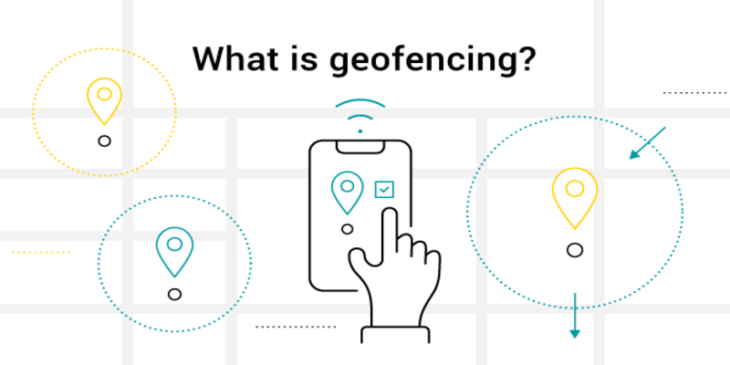
Geofencing is a technology that uses GPS, RFID (radio-frequency identification), or Bluetooth to create a virtual boundary around a physical location. When a device or person enters or leaves this boundary, a notification or an action can be triggered.
Here’s an example of how geofencing works:
A business owner sets up a geofence around their store.
When a customer with a smartphone enters the store, their device connects to a wireless network and sends a notification to the business owner’s app.
The business owner can then send a personalized message or offer to the customer through the app.
Location-based marketing, security, and asset tracking are just a few of the uses for geofencing.
When a customer enters a store, a retailer might use geofencing to give them a coupon, and a security firm might use it to notify people when a valued item departs a specified region.
You will need a device or app that can track location and connect to the internet in order to set up a geofence. You must also indicate the actions or alerts that should be triggered whenever someone enters or exits the fence, as well as the geographic bounds of the barrier.
If you are looking for any services related to Website Development, App Development, Digital Marketing and SEO, just email us at nchouksey@manifestinfotech.com or Skype id: live:76bad32bff24d30d
𝐅𝐨𝐥𝐥𝐨𝐰 𝐔𝐬:
𝐋𝐢𝐧𝐤𝐞𝐝𝐢𝐧: linkedin.com/company/manifestinfotech
𝐅𝐚𝐜𝐞𝐛𝐨𝐨𝐤: facebook.com/manifestinfotech/
𝐈𝐧𝐬𝐭𝐚𝐠𝐫𝐚𝐦: instagram.com/manifestinfotech/
𝐓𝐰𝐢𝐭𝐭𝐞𝐫: twitter.com/Manifest_info
#Geofencing #LocationBasedMarketing #GeolocationServices #GeoTargeting #LocationTracking #GeoMarketing #GeospatialTechnology #ProximityMarketing #LocationIntelligence #MobileAdvertising #GeofenceMarketing #LocationAwareness #GeofenceTechnology #GeoAnalytics #GeofenceCampaign #GeofenceApp #GeofenceDevelopment #GeofenceSolutions #LocationBasedServices #GeoData